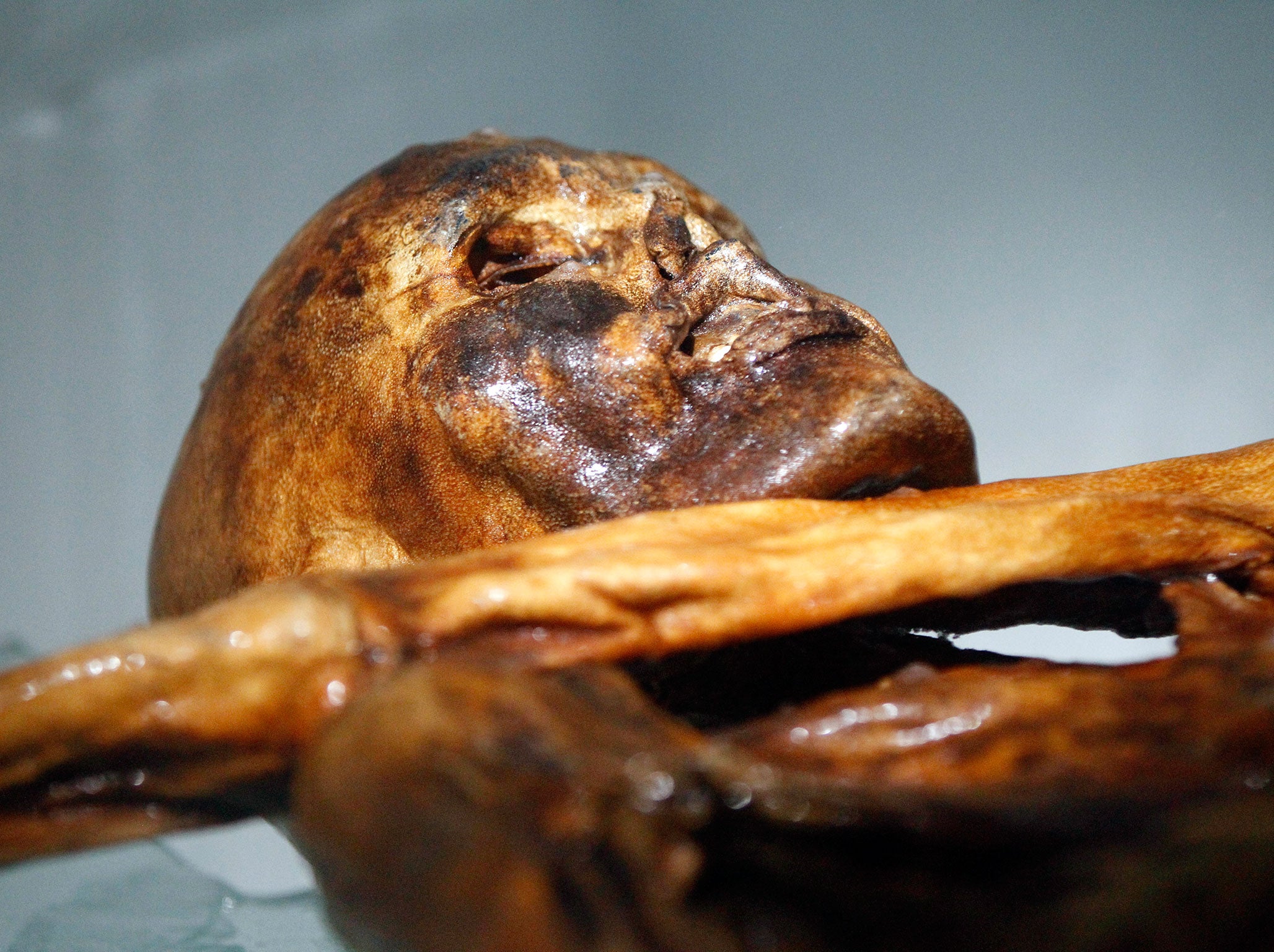Oldest tattoo ever found: Marks on ‘Iceman Otzi’ proved to be first known body art
Research shows that the 61 tattoos on the European specimen are the oldest tattoos known, putting to rest a long-running argument

Scientists have finally established where exactly the oldest tattoo ever drawn can be found.
The 61 tattoos that are across Iceman Ötzi’s body are the oldest tattoos known to man, according to new research.
Scientists have long argued about whether the oldest tattoos known belong to the Tyrolean Iceman called Ötzi who died around 3250BC or an unidentified South American Chinchorro mummy that has a moustache-like marking around its face. A new examination of the latter specimen has shown that Ötzi is older than the mummy — who had been thought to have died around 4000BC but is actually much younger— and confirms that the European specimen’s tattoos are the oldest preserved examples.
“I was surprised by the findings because in previous publications I brought attention to the tattooed Chinchorro mummy and its early date,” Lars Krutak, who was involved in the research, told Smithsonian Science News. “To me this mummy was like an underdog versus the all-too-popular Iceman that everyone was writing and talking about.
“But after reviewing the facts, we were compelled to publish the article as soon as possible to set the record straight and stem the tide of future work compounding the error.”

The 61 tattoos on Ötzi’s body consist mostly of groups of lines or crosses, and are spread across his body. They were produced by making fine incisions in the skin and then rubbing charcoal into them — as such they are thought to have been meant to be therapeutic rather than as decoration.
It is very difficult to ascertain when tattooing came about in human culture because there are few written records and scientists must instead look at the archaeological record. But even that can be hard to depend on, since it is often tough to tell exactly what function possible tattoos served, and whether ancient implements were used for tattooing or for other purposes.
Hundreds of ancient tattooed specimens have been found. While Ötzi is now the oldest known, many more ancient examples have been found across the world, including in modern day Russia, Egypt and China.
It’s highly likely that Ötzi’s tattoos won’t stay as the oldest ones found, as we discover more about our ancestors. His markings suggest that by the time he received them the practice was developed and widespread, probably meaning that there are older tattoos in existence.
Scientists should now look at the various other specimens and mummies that are collected in museums to see whether they had more tattoos, said the authors of the new research. That in turn could help to discover that tattooing is even older than we currently know.
“Apart from the historical implications of our paper, we shouldn’t forget the cultural roles tattoos have played over millennia,” Krutak told Smithsonian Science. “Cosmetic tattoos—like those of the Chinchorro mummy—and therapeutic tattoos—like those of the Iceman—have been around for a very long time. This demonstrates to me that the desire to adorn and heal the body with tattoo is a very ancient part of our human past and culture.”
Join our commenting forum
Join thought-provoking conversations, follow other Independent readers and see their replies
Comments